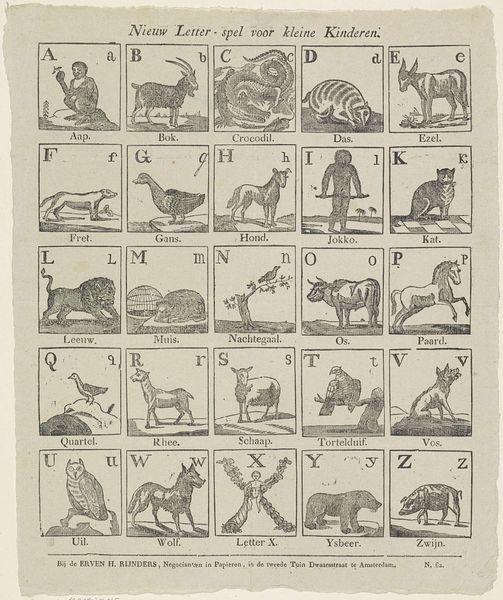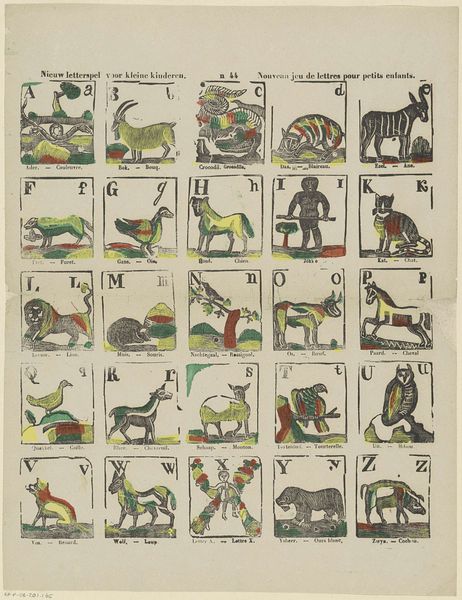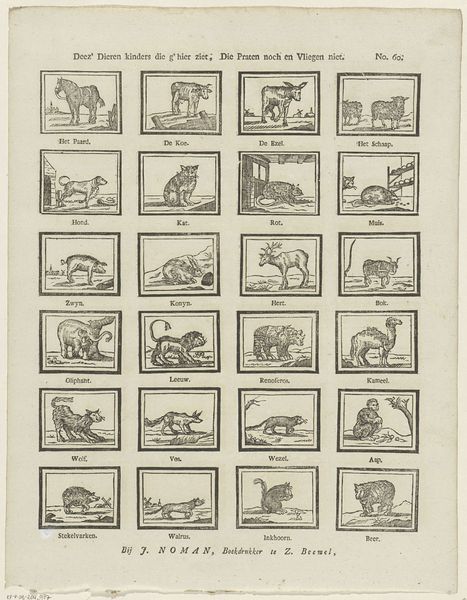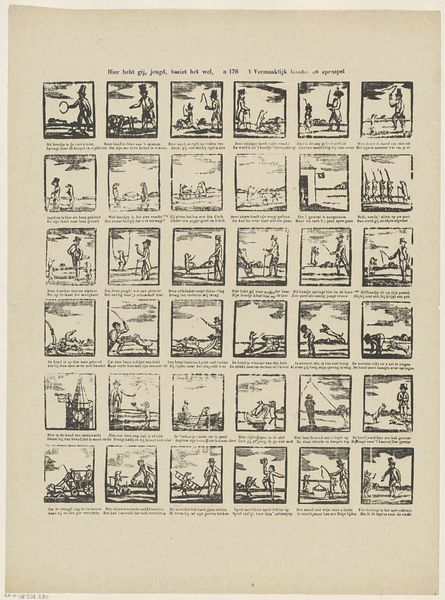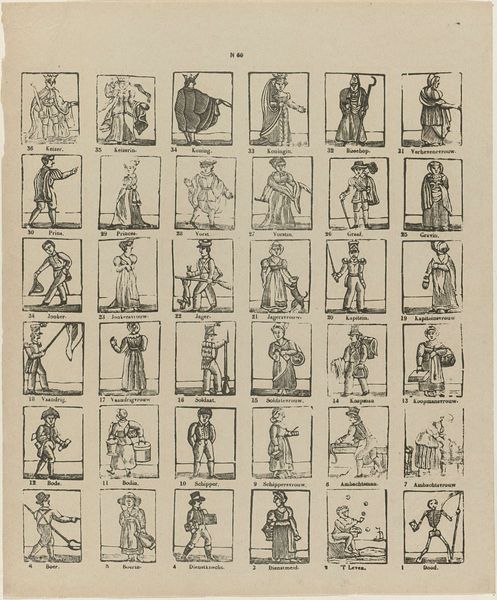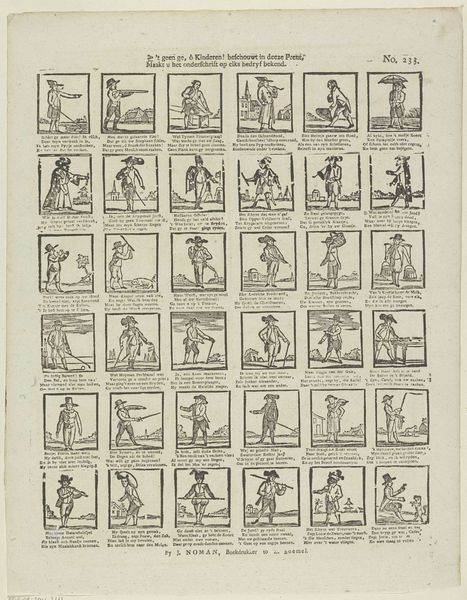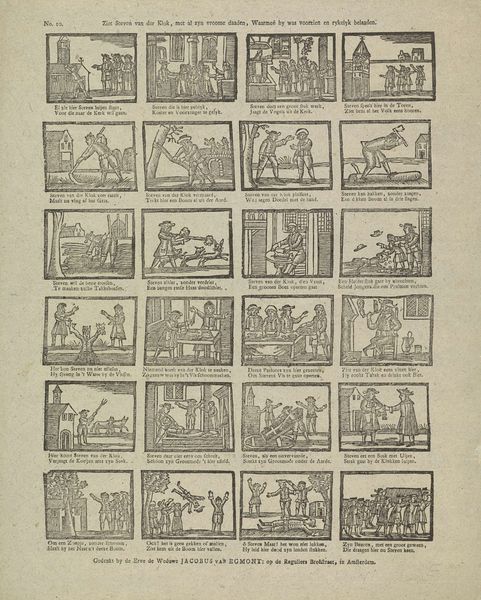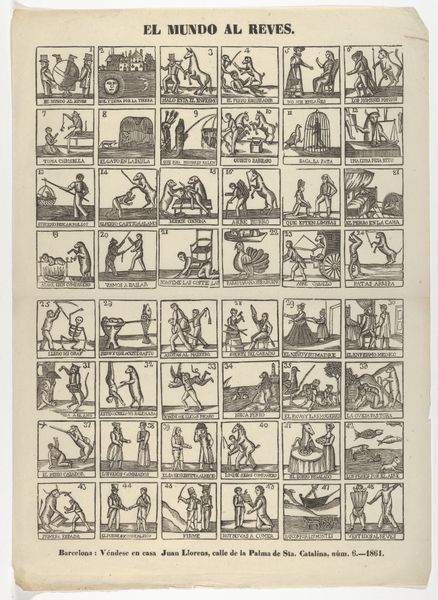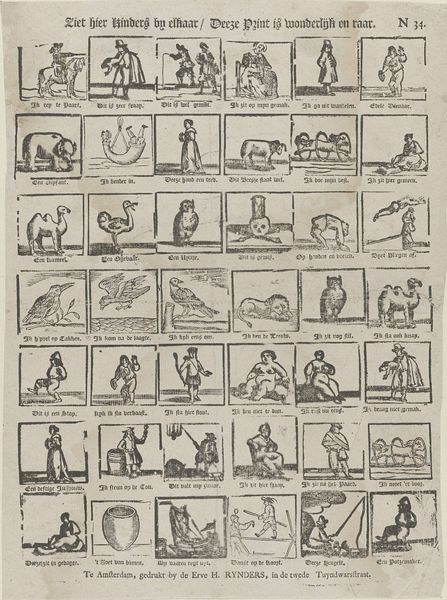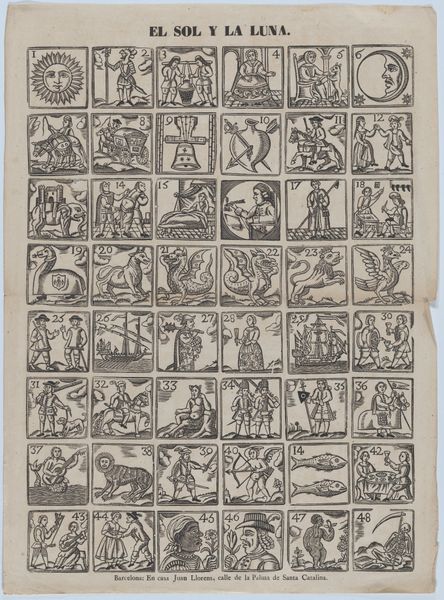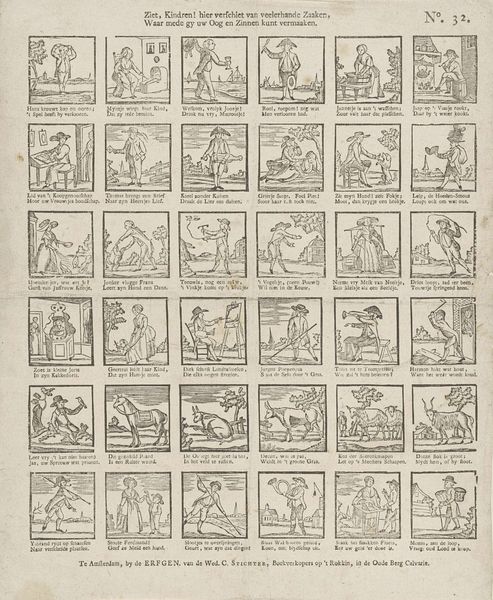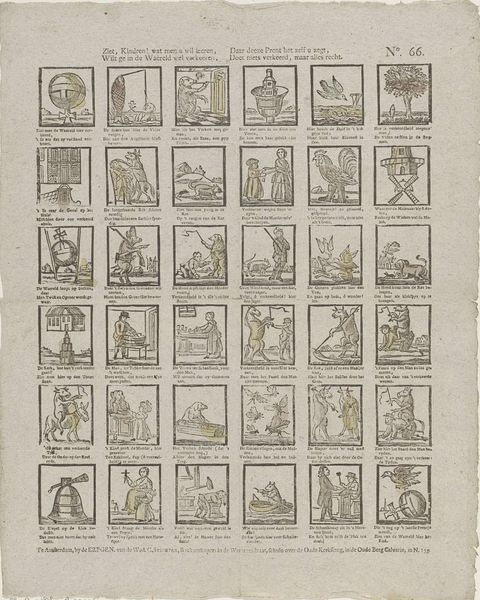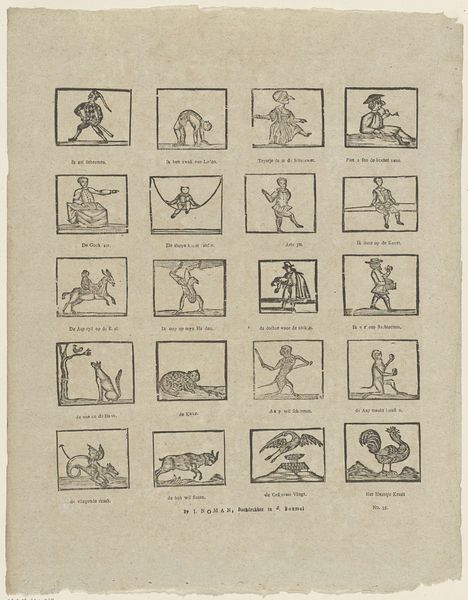
graphic-art, print, woodcut, engraving
#
graphic-art
# print
#
woodcut
#
engraving
#
monochrome
Dimensions: height 392 mm, width 333 mm
Copyright: Rijks Museum: Open Domain
Editor: This is "Nieuw letterspel voor kleine kinderen," or "New alphabet game for young children," a graphic art print by Glenisson & Zonen, sometime between 1833 and 1900. It’s a monochrome print using woodcut and engraving, featuring an image for each letter of the alphabet. It reminds me of old flashcards. What historical context should we consider when looking at this work? Curator: It's fascinating to consider this alphabet sheet within its historical moment. Beyond its seemingly simple educational purpose, we can ask, how does it reflect the power dynamics of the 19th century? Look at the image representing the letter ‘A.’ Editor: Yes, the figure under “A,” it's... unsettling. Curator: Precisely. How is this figure depicted? And what assumptions about race and representation might be embedded within that choice? Considering that colonialism was at its peak then, how does this alphabet, seemingly innocuous, participate in shaping and perpetuating certain views of the world for young minds? What cultural biases may be present? Editor: It’s shocking to think about such biases in what appears to be just an educational tool. The other figures are mostly animals...domesticated ones at that. Curator: Exactly! Who has the power to name, classify, and represent? By looking at this "letterspel," we can unravel a complex web of historical and social constructs that shaped not only education but also perceptions of self and others during that time. Does that make you see the print in a new way? Editor: Definitely. It’s a good reminder that art, even something that looks like a simple game, can carry a heavy history. Thank you. Curator: And thank you. By interrogating these objects, we open up pathways to understand the past and critically engage with the present.
Comments
No comments
Be the first to comment and join the conversation on the ultimate creative platform.
